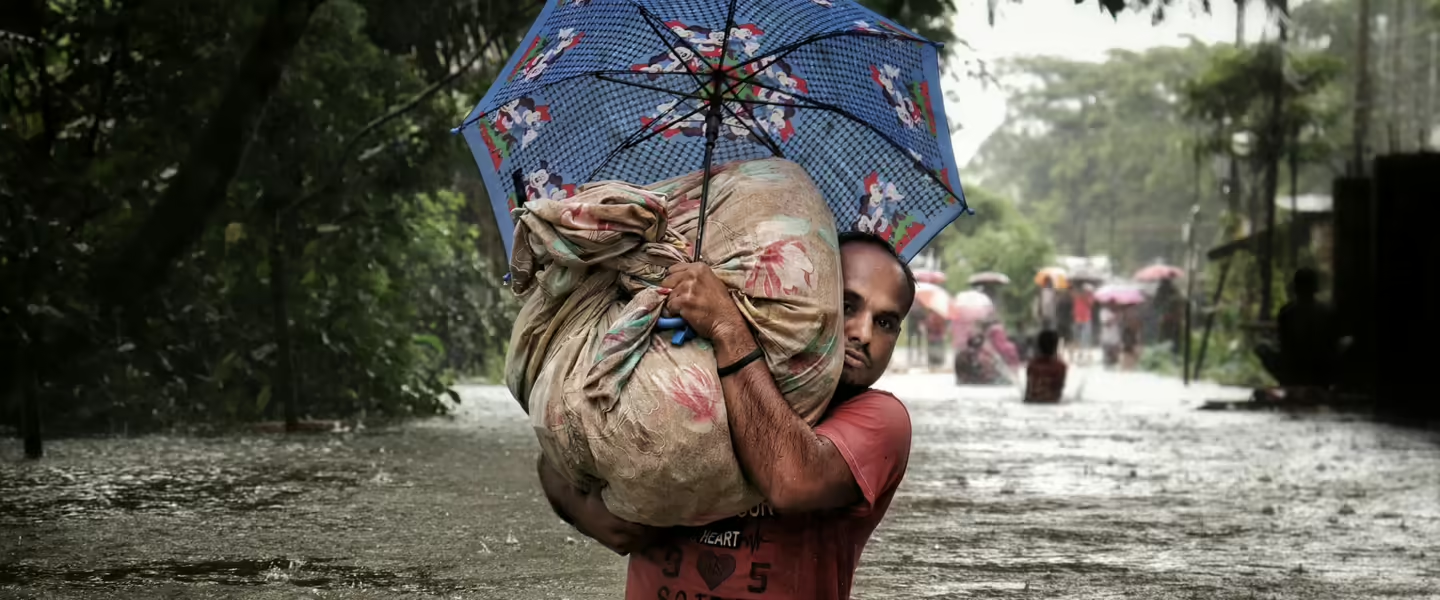Bangladesh Is Left Without a Government
After its prime minister fled to India, Bangladesh’s army offered to take over. While protesters say they won’t accept that, the alternative may be anarchy.
|
Listen To This Story
|
Bangladesh once took pride in considering itself one of the world’s most populous functioning democracies. Not anymore.
On Monday, Sheikh Hasina, who had served as Bangladesh’s prime minister for the last 15 years, hastily boarded a military helicopter and fled to neighboring India. She explained that she had wanted to deliver a parting speech but had not had time. Moments after she fled, a mob stormed her residence and sacked it. Her son, Sajeeb Wazed, later told the BBC that she had wanted to stay in Bangladesh but that her family finally convinced her that it would be suicide.
At least 13 policemen were beaten to death in the growing riots over the preceding 24 hours; the police themselves had shot and killed at least 300 demonstrators since the protests began, more than 100 the day before Hasina fled the country.
After her departure, Bangladesh’s capital, Dhaka, was overtaken by a sudden sense of euphoria. Student protesters issued a list of 15 demands, nearly all of which called on everyone in Bangladesh to cease whatever they were doing. What they were supposed to do next was not clear.
The military announced that it would create a provisional government. The protesters refused to accept it. Bangladesh’s president subsequently announced that Mohamed Yunus would serve as interim president. Yunus, a social entrepreneur, won the Nobel Peace Prize in 2006 for pioneering microcredits — small loans, mostly to Bengali women, that enabled the poor to start small businesses and work their way out of poverty. The internationally-lauded Yunus is not a bad choice, but it was less than clear whether he would be able to reign in the anarchy and different demands that followed Sheikh Hasina’s departure.
To some, the sudden overthrow of the 76-year-old Hasina might look like just another political upheaval in yet another lower-middle-income economy struggling to establish a viable system of self-government. In fact, the sequence of events in Bangladesh may be an early warning of what happens when humanity is squeezed to the breaking point by the twin pressures of overpopulation and climate change. It could be our canary in the coal mine.
The irony is that, in spite of the current crisis, Bangladesh has been moving with surprising speed from extreme poverty to nearly middle-income status. The problem is that it was simply not enough.
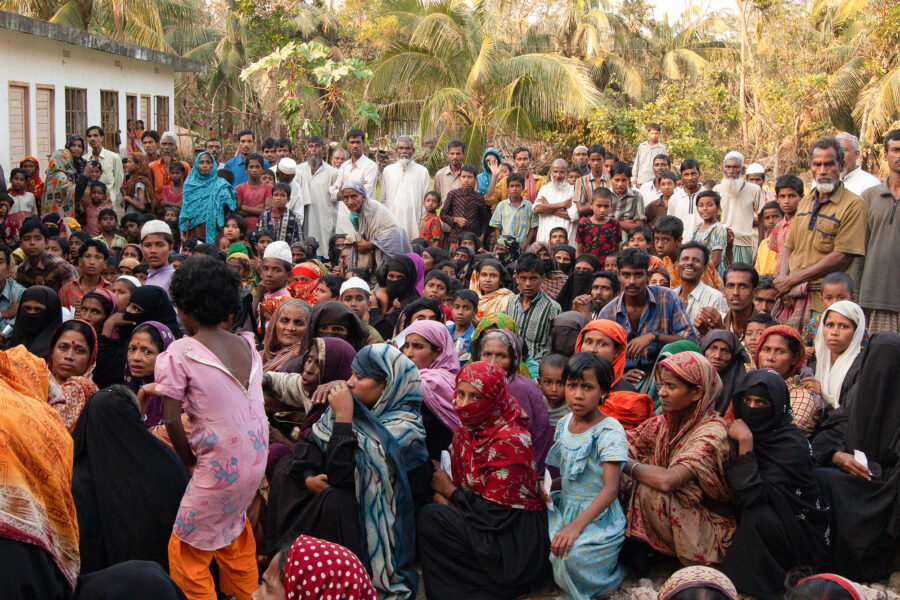
The protests that led to the prime minister’s hasty retreat were originally aimed at overturning a government that reserved a third of government jobs for families who had fought in Bangladesh’s bloody struggle to break away from Pakistan in 1971. But chronic unemployment is only the most obvious of Bangladeshi complaints. The country’s real problems are population growth and climate change, which have turned the country into a human pressure cooker.
Bangladesh’s current population stands at roughly 170 million people — at least 30 million more than all of Russia — squeezed onto a landmass roughly the size of Wisconsin. Bangladesh’s dilemma is plain — it is crowding too many people on too small a territory with too few resources to be sustainable.
Despite the complaints against her, Hasina managed to push Bangladesh’s GDP to a remarkable 7.1 percent annual growth rate. That was before the COVID-19 pandemic paused the world’s economy. But even after the global slowdown, Bangladesh’s GDP continued to grow at a respectable 5.8 percent, slightly greater than that of China.
While the growing economy helped to expand the country’s middle class, the new wealth was not equally distributed, and a growing segment of the population felt left behind. Others found themselves forced into what often amounted to economically enforced slave labor.
Unskilled textile workers are paid a minimum wage of $113 a month. Labor unions noisily insisted that it’s impossible to live in Bangladesh today on less than $208 a month. The owners of textile companies refused to listen. For some Bangladeshis, the surge in textile exports amounted to a gold rush. For others, it meant hopeless drudgery. The lion’s share of the profits inevitably went to wealthier countries.
The US, Bangladesh’s largest export market, accounted for $7.29 billion from June 2023 to July 2024. While luxury sports apparel costs practically nothing to produce in Bangladesh, it sells for record high prices abroad, providing a windfall for some of the world’s most important clothing companies, including Gap, Hugo Boss, Levi Strauss, Nike, Zara, and Walmart. The Bangladesh Garment Manufacturers and Exporters Association hopes to boost exports to $100 billion by 2030.
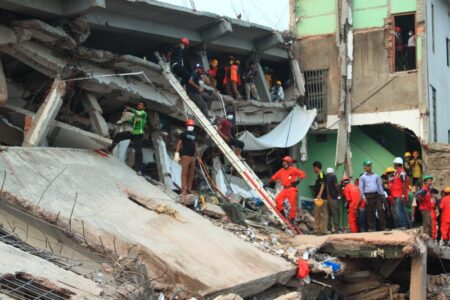
Textiles are by far Bangladesh’s largest source of foreign currency, but the conditions to which workers were being subjected became apparent in the 2013 Rana Plaza disaster, the worst in Bangladesh’s history.
The upper floors of the eight-story “Rana Plaza” commercial building were used primarily by sweatshops sewing luxury goods for foreign export. When large cracks became apparent in the building’s foundation, ground floor shops and a bank were promptly evacuated, but the owners of the building’s clothing sweatshops ordered their workers to continue working or lose their jobs.
After a power outage, the building’s diesel generators were turned on. The vibrations caused by the generators collapsed the building. It turned out that the building had been constructed in violation of standard building codes, which its owners had clearly violated. At least 1,134 workers died when tons of collapsed concrete flooring buried them alive. Another 2,600 were injured.
Bangladesh’s urban problems have been bad enough; climate change has made the situation worse. At least 200 rivers cross the country in 57 major systems. During dry months, the Brahmaputra, one of the country’s four great rivers, is a little more than half a mile wide, but its width can easily expand to 6 miles or more during the monsoon season. That is when the glaciers and snow in the Himalayas begin to melt. A rush of water descends from Tibet through India, where some of it is caught by dams. At a certain point, the dams can no longer hold the flood, and it courses down to Bangladesh, taking a path that is often hard to predict.
The Brahmaputra has been nicknamed “the river that dances.” The surrounding land is so flat that the river can change course at a moment’s notice, wreaking destruction on unsuspecting locations.
A 1998 flood covered two-thirds of Bangladesh’s land mass, leaving millions of people homeless. The annual floods ordinarily affect, on average, a fifth of Bangladesh’s land mass, inundating everything in their path. Land is so scarce that farmers risk their lives to cultivate the floodplain, fully aware that flash floods can be instantaneous and lethal.
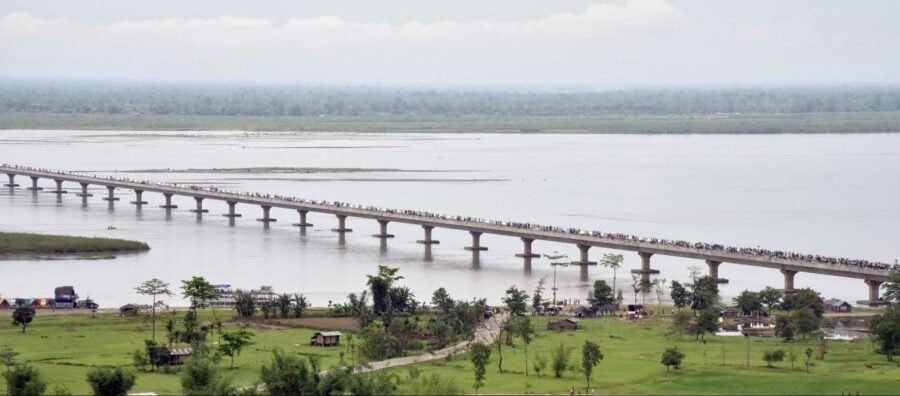
Traveling up the Brahmaputra after one of the floods, I asked a farmer what it had been like. “I was sleeping in my bed,” she said. “I woke up at 3 o’clock in the morning, and there was water everywhere.”
The floods not only cost lives, they leave millions homeless and cost the government billions of dollars. The floods often wipe out all of a family’s possessions. In order to survive, the victims are forced to take out loans, which turn them into indentured laborers for the foreseeable future. The result is a downward spiral leading to financial destruction and hopelessness.
The floods also pollute much of Bangladesh’s drinking water, making dysentery endemic. No one can predict what will happen when the glaciers in Tibet are finally completely melted and the river that people both fear and depend on finally disappears.
The melting Himalayan ice cap is only one of Bangladesh’s climate problems. In 2007, Bangladesh was hit by Cyclone Sidr, with winds that reached up to 160 miles an hour. The coastal area was hit by a sea surge — a wall of water 16 feet high.
Disasters come in two stages. The first is the actual event. The coup de grace comes after.
I traveled downriver to the coast once the cyclone was over. The bloated bodies of dead water buffalo floated past our boat. Where villages had once been, the survivors attached a makeshift flag, a piece of colored cloth, to a tree to indicate what had been their home. Nothing else was left. I talked to a woman who survived the surge. “I tried to hold on to a tree with one arm, and my baby with the other,” she said. “Finally, it was too much. My baby was swept away.”
The heat was overpowering, but the ponds that villagers depended on for drinkable water had been turned black and undrinkable by the sea surge. There was no potable water, no food, no help. The dazed survivors were left on the scarred remains of the storm’s aftermath without support and with no hope for the future. Rising sea levels from climate change threaten even greater disasters in the future.
It would be easy to look at Bangladesh’s current pain as someone else’s problem. After all, what has it got to do with us in the West, or the rest of the developed world? In fact, Bangladesh today is to a significant extent the limping survivor of a colonial past that extended into the first half of the 20th century.
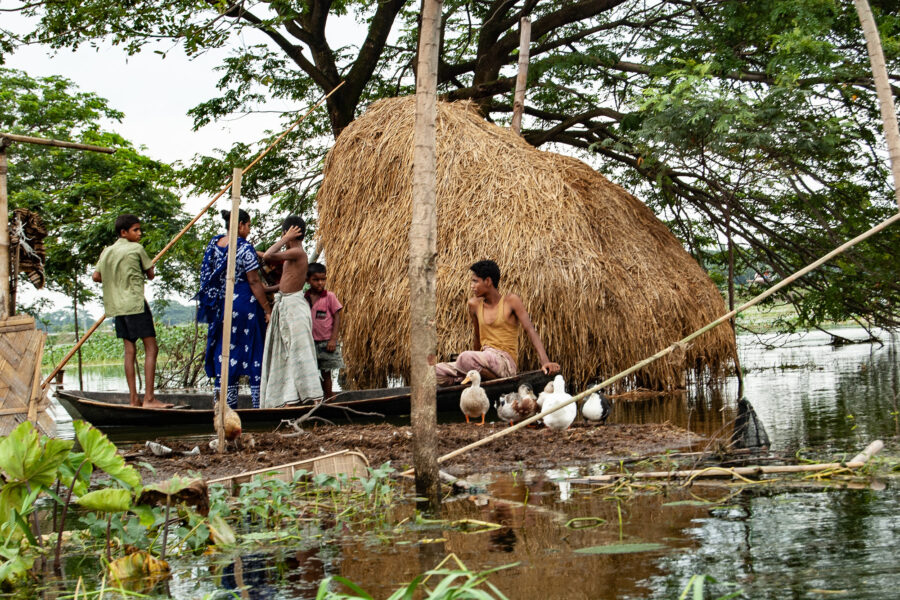
Like the rest of India, Bangladesh was once a thriving part of Britain’s world-spanning empire. Most of the subcontinent’s wealth was stripped away and shipped to Europe by the East India Company, which happily plundered indigenous resources for nearly three centuries.
In the 19th century, the British transformed Bengal into a highly profitable colony that stretched from Afghanistan’s Khyber Pass to Singapore, feeding the appetite of an empire on which the sun never set.
After World War II, formal colonialism went out of fashion, and dreams of empire soon gave way to more nuanced forms of neocolonialism. The developed world’s hold over the underdeveloped world was, for the most part, no longer enforced by armies and gunboat diplomacy. Instead, it was maintained by commercial contracts, joint production agreements, and international development loans. It was of little import to the West that development money soon disappeared into the pockets of corrupt local politicians, or that the Third World countries that had nominally received the loans were increasingly bound to the demands of the developed world, once the loans had plunged them into endless debt.
In 1948, Britain granted India independence. A year earlier, in 1947, the departing British administration had overseen the separation of India into Muslim and Hindu territories. Most of India’s Muslims were incorporated into West Pakistan, which covered the territory of modern Pakistan, and East Pakistan, modern day’s Bangladesh. West Pakistan was largely Punjab, but included a wide range of other ethnic groups as well. The official language was Urdu, written in Persian-Arabic script. In contrast, East Pakistan was uniformly Bengali, with a completely separate language and writing system The only thing that the two versions of Pakistan had in common was Islam, and they differed on how to interpret that.
Western Pakistan soon evolved into a self-declared Islamic state, became increasingly authoritarian and was intermittently controlled by a military regime. East Pakistan, which initially represented the larger population, had democratic aspirations and insisted on retaining its Bengali identity. In 1971, the clash between Pakistan’s opposing cultures erupted into a bloody civil war that turned into an attempted genocide pitting West Pakistan’s Punjabis against East Pakistan’s Bengalis. An estimated 3 million Bengalis lost their lives in that war.
While the war was still raging, I went to a Bengali refugee camp named Salt Lake, just outside Calcutta. Six million refugees had sought safety there.There was no sanitation, and hardly any food. “This is a dangerous place,” my driver told me.
He dropped me off a half mile from the camp. Some refugees were living in row after row of massive concrete sewer pipes. The condition of the starving refugees was so dire that they were literally dropping dead all around me, as I walked through the camp trying to interview the survivors.
Bangladesh — the newly adopted name for East Pakistan — had become one of those far-off “causes” that appeal to rock musicians, students, and certain politicians. Ted Kennedy, who was then a senator, had flown into the camp with some nutrition experts from MIT. After one starving refugee after another was presented to the senator, Kennedy finally asked desperately, “Can’t someone please feed them?” The experts in nutrition tried to explain, “It’s too late.”
Those memories flooded back when I thought of Bangladesh’s prime minister, Sheikh Hasina, fleeing to India. I can’t really blame her for wanting to escape the impossible situation that Bangladesh has become. Then I remembered something else from back then, long before climate change had become an existential threat to humanity. An old Indian saying: “As Bengal thinks today, India will think tomorrow.” And maybe the rest of the world soon after.
